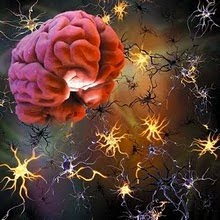No existe un tratamiento que modifique ostensiblemente la evolución fatal de la demencia por cuerpos de Lewy (DCL), pero el adecuado tratamiento de los síntomas puede mejorar la calidad de vida de los pacientes y de sus cuidadores.
Aunque son varios los estudios epidemiológicos que señalan la DCL como la segunda causa más frecuente de demencia degenerativa primaria, en la práctica clínica diaria este tipo de demencia se diagnostica en un porcentaje inferior. Posiblemente esto sea debido a que, en su fase inicial, se puede confundir con otros trastornos, como la de forma destacada con la demencia tipo alzhéimer y con la enfermedad de Parkinson.
Es fundamental realizar un adecuado diagnóstico diferencial que permita adecuar el tratamiento farmacológico y predecir la evolución del caso. Para ello es fundamental atender a varios criterios clínicos que permitan el diagnóstico diferencial y a pruebas complementarias, como la exploración neuropsicológica y el estudio por imagen de las vías dopaminérgicas.
Episodes of Parkinson’s disease and dementia with Lewy bodies overshadowed by Alzheimer’s disease
Introduction. The second most frequent cause of dementia of those with a neurodegenerative origin is dementia with Lewy bodies, which accounts for 15-25% of the total number of cases of dementia. Case report. The aim of this study is to describe a clinical case of dementia with Lewy bodies, with emphasis on the need to perform the differential diagnosis with Alzheimer-type dementia and Parkinson’s disease with dementia.
The article highlights the importance of the agreed clinical criteria and complementary tests, such as the neuropsychological examination and imaging studies carried out to examine the dopaminergic pathways. The clinical criteria were the following: presence of dementia as the central feature, fluctuating attention, visual hallucinations and Parkinsonism as the nuclear features, and other suggestive features (frequent falls, syncopes, lowered level of consciousness). With regard to the neuropsychological examination, this type of dementia presents a particular profile, with an impaired capacity for visuospatial organisation and deficits in attention and the executive capabilities. Lastly, the study also underlines the importance of matching the pharmacological treatment to the particular characteristics of this dementia. Thus, it is essential to take into account the fact that the administration of anticholinergic agents and levodopa can upset the levels of attention and give rise to hallucinations. Conclusions. There is currently no treatment available that can make any clear changes to the fatal course of the disease, but suitable treatment of the symptoms can improve the quality of life of both patients and their caregivers.
http://www.viguera.com/sepg/pdf/revista/0204/0204_0221_0226.pdf

No hay comentarios:
Publicar un comentario